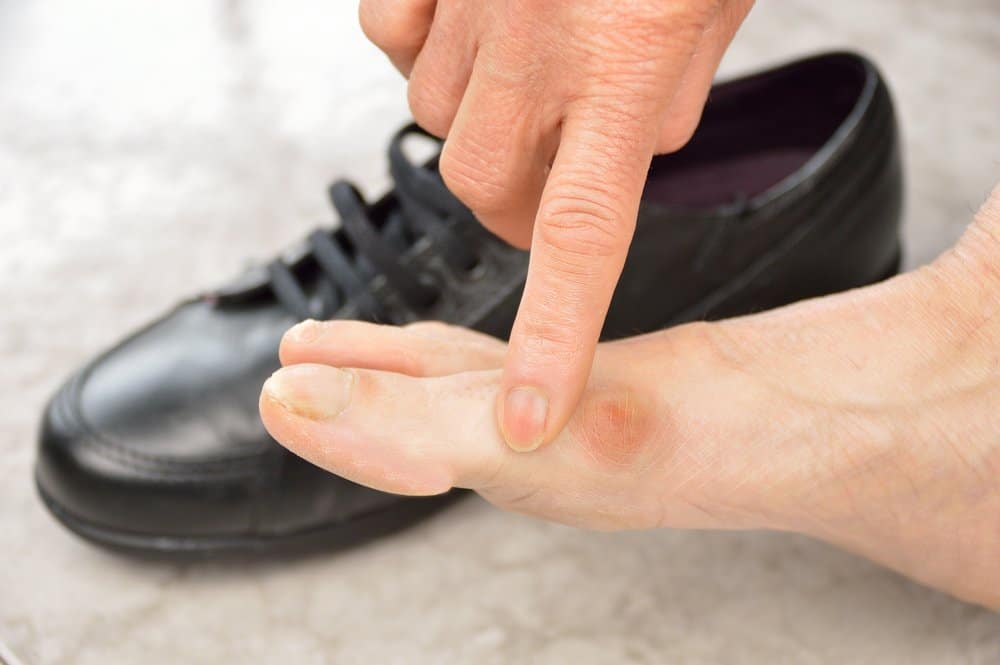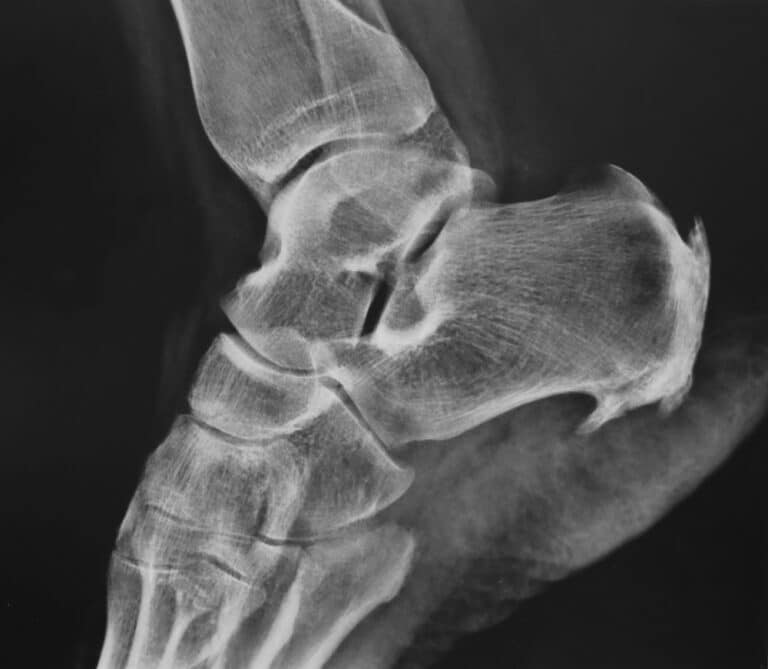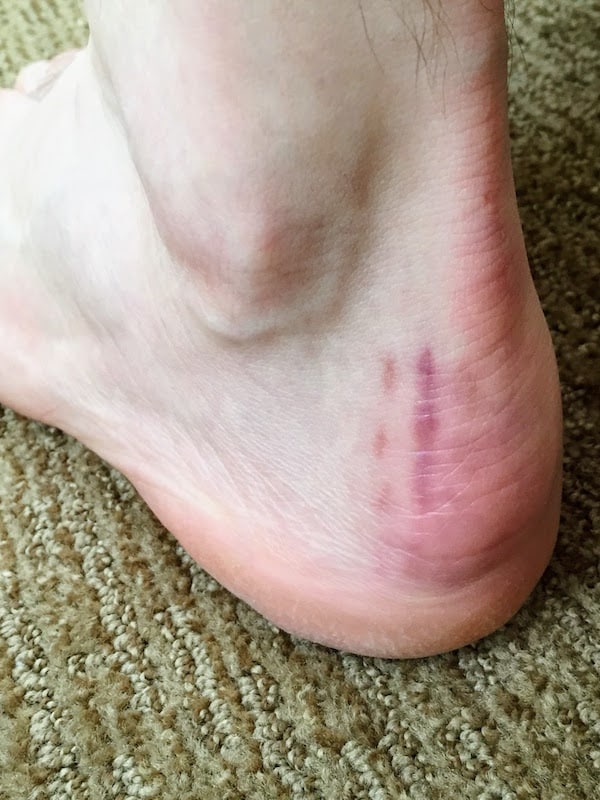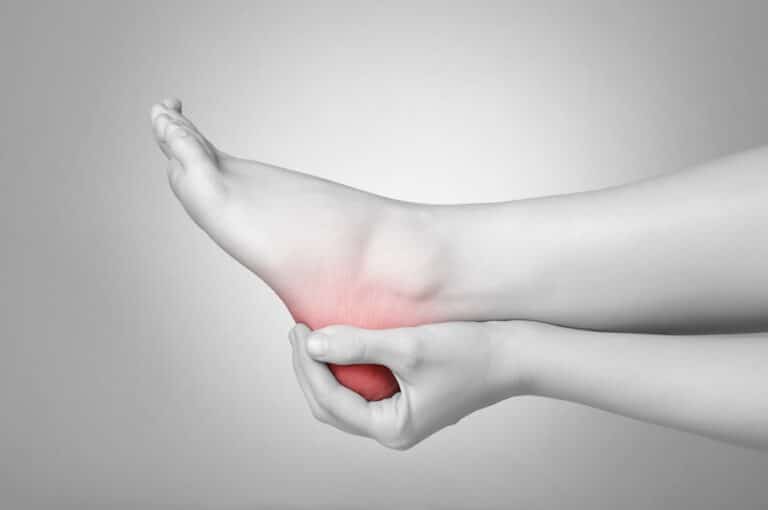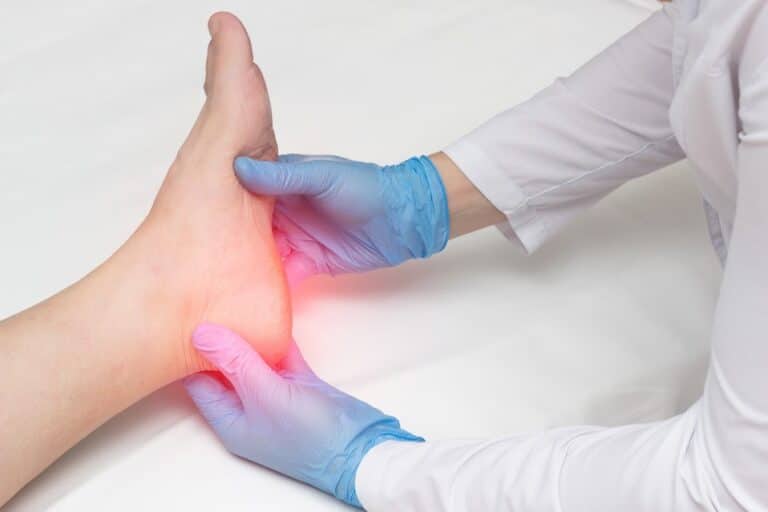What shoes cause bunions, certain types of footwear can contribute to the development or worsening of bunions. It is important to note that while these shoe types may be associated with an increased risk of bunions, individual factors such as foot structure, genetics, and underlying biomechanical issues also play a role in bunion development.
It is advisable to choose footwear that provides adequate support, has a wider toe box, and allows for natural foot movement to reduce the risk of bunions or alleviate existing bunion-related discomfort.
Get a 10% Discount on Minimally Invasive Bunion Surgery
Shoe Styles to Avoid: Identifying the Culprits Behind Bunion Formation
When it comes to preventing or managing bunions, certain shoe styles are best avoided as they can contribute to the formation or worsening of bunions. Here are some shoe styles to steer clear of:
- High-heeled Shoes: High heels, especially those with pointed toes, place excessive pressure on the front of the foot, pushing the toes together and increasing the risk of bunions. Opt for lower-heeled or flat shoes that provide better support and allow for proper alignment of the foot.
- Tight and Narrow Shoes: Shoes that are too tight or narrow squeeze the toes together, causing crowding and misalignment. Avoid shoes with a narrow toe box that cramp the toes. Opt for shoes with a wider toe box that allows the toes to move and spread naturally.
- Flip-flops and Unsupportive Sandals: Flat, unsupportive footwear like flip-flops and certain sandals lack proper arch support and cushioning. This can strain the foot’s structures and contribute to bunion formation. Look for sandals with arch support or choose shoes that provide better stability and shock absorption.
- Pointy-toed Shoes: Shoes with a pointed toe box can compress the toes and force them into an unnatural position, increasing the risk of bunions. Opt for shoes with a more rounded or square toe box that provides ample room for the toes to move and align properly.
- Ill-fitting Shoes: Shoes that do not fit properly can create pressure points and increase the likelihood of bunions. Avoid shoes that are too tight or too loose, as they can affect the foot’s alignment and stability. Make sure to wear shoes that fit comfortably and provide enough space for your toes to move freely.
- Stiff and Rigid Shoes: Shoes with rigid materials and limited flexibility can restrict natural foot movement and contribute to bunion development. Look for shoes that offer some flexibility, allowing the foot to move naturally while providing adequate support.

By avoiding these shoe styles and opting for more comfortable, supportive, and properly fitting footwear, you can reduce the risk of bunion formation or alleviate discomfort associated with existing bunions.
High Heels and Bunions: Exploring the Relationship between Fashion and Foot Health
High heels are often associated with fashion and style, but they can have a detrimental impact on foot health, including the development and progression of bunions. Here’s a closer look at the relationship between high heels and bunions:
- Increased Pressure on the Forefoot: High heels, especially those with pointed toes, force the weight of the body onto the front of the foot, increasing pressure on the metatarsophalangeal (MTP) joint at the base of the big toe. This excessive pressure can contribute to the misalignment of the joint and the formation of a bunion.
- Toe Crowding: The narrow and cramped toe box in high heels forces the toes, particularly the big toe, into a crowded position. This can lead to toe deformities, including bunions, as the toe is pushed out of its natural alignment.
- Changes in Foot Mechanics: Wearing high heels alters the biomechanics of the foot. The body’s weight is shifted forward, affecting the distribution of pressure and altering the normal gait pattern. This change in mechanics can place stress on the MTP joint and contribute to bunion development.
- Increased Risk with Prolonged Use: Wearing high heels for prolonged periods or on a regular basis further increases the risk of bunions. The repetitive stress and pressure on the foot can lead to progressive changes in the joint structure over time.
While high heels are not the sole cause of bunions, they can significantly contribute to their development and exacerbation. If you already have bunions, wearing high heels can worsen the symptoms and increase discomfort.
To prioritize foot health and reduce the risk of bunions:
- Opt for lower-heeled shoes or choose flats that provide better support and stability.
- Look for shoes with a wider toe box that allows the toes to move and spread naturally.
- Consider wearing orthotic inserts or pads to provide cushioning and support for the foot.
- Limit the duration and frequency of wearing high heels, reserving them for special occasions.
- If you must wear high heels, choose ones with a lower heel height and a wider toe box to minimize pressure on the foot.
By being mindful of the relationship between high heels and bunions, you can make informed footwear choices that prioritize both fashion and foot health.
Get a 10% Discount on Minimally Invasive Bunion Surgery
Narrow and Pointy Toe Shoes: The Impact of Tight Footwear on Bunion Development
Narrow and pointy toe shoes can have a significant impact on the development and progression of bunions. Here’s a closer look at how tight footwear affects bunions:
- Toe Compression: Shoes with a narrow or pointy toe box compress the toes, particularly the big toe, into an unnatural position. This constant compression can cause the big toe to deviate outward, leading to the formation of a bunion.
- Toe Crowding: Tight shoes force the toes to squeeze together, leading to crowding and overlapping. This can exacerbate the misalignment of the big toe and increase the risk of bunion development.
- Pressure on the Bunion Area: If you already have a bunion, wearing narrow or pointy toe shoes can place additional pressure on the bony prominence, leading to discomfort, pain, and inflammation.
- Restricted Toe Movement: Tight footwear restricts the natural movement of the toes, preventing them from splaying and spreading as they should during walking and other activities. This lack of toe movement can contribute to imbalances in foot mechanics and exacerbate bunion-related issues.

To prevent or alleviate bunions caused by narrow and pointy toe shoes, consider the following:
- Choose Shoes with a Wider Toe Box: Opt for shoes that provide ample room for your toes to move and spread naturally. Look for styles with a wider toe box that allow for proper alignment and reduce pressure on the toes.
- Consider Toe Spacers or Orthotic Inserts: Toe spacers or orthotic inserts can help realign the toes, provide cushioning, and alleviate pressure on the bunion area. They can be used inside your shoes to promote better toe positioning and reduce discomfort.
- Avoid Tight-Fitting Shoes: Steer clear of shoes that are excessively tight or narrow. Instead, prioritize footwear that fits comfortably, provides adequate support, and allows for proper toe movement.
- Shop for Shoes in the Afternoon: Feet tend to swell throughout the day, so it’s best to try on shoes in the afternoon when your feet are at their largest. This ensures a better fit and helps prevent buying shoes that are too tight.
By avoiding narrow and pointy toe shoes and opting for footwear that prioritizes comfort and toe space, you can reduce the risk of bunions and minimize discomfort associated with existing bunions. Remember, it’s important to choose shoes that promote foot health and allow for natural toe movement.
Finding the Right Balance between Support and Comfort
Finding the right balance between support and comfort in footwear is crucial for maintaining foot health and reducing the risk of bunions. Here are some tips to help you strike the right balance:
- Choose Shoes with Proper Arch Support: Look for shoes that provide adequate arch support to maintain proper foot alignment and reduce stress on the feet. Shoes with built-in arch support or removable insoles that offer customizable support are beneficial.
- Opt for Cushioning and Shock Absorption: Shoes with cushioning materials in the midsole and outsole help absorb shock and reduce the impact on your feet. This can provide added comfort and protect your feet from excessive pressure during daily activities.
- Consider Footbed Contours: Look for shoes with contoured footbeds that match the natural shape of your foot. These contours can provide additional support, promote proper foot alignment, and enhance overall comfort.
- Prioritize Toe Box Space: Choose shoes with a wider toe box that allows your toes to move and spread naturally. This helps prevent crowding, reduces pressure on the toes, and lowers the risk of bunion development.
- Ensure Proper Fit: Always wear shoes that fit properly. Avoid shoes that are too tight or too loose, as they can create pressure points or compromise stability. Measure your feet regularly and try on shoes to ensure a comfortable and secure fit.
- Consider Orthotic Inserts: If needed, use orthotic inserts or custom-made orthotics prescribed by a healthcare professional. These can provide additional support, correct foot imbalances, and improve overall foot function.
- Test Shoes for Flexibility: Check the flexibility of shoes before purchasing. Shoes should have some flexibility in the forefoot area to allow for natural foot movement during walking or running.
- Gradually Break-in New Shoes: When you get new shoes, take the time to break them in gradually. Start by wearing them for short periods to allow your feet to adjust to the new footwear and ensure maximum comfort.
Remember, everyone’s feet are unique, and what works for one person may not work for another. It’s important to find footwear that suits your specific needs, taking into consideration any existing foot conditions or concerns.
Choosing Bunion-Friendly Shoes
Choosing bunion-friendly shoes can help alleviate discomfort and prevent the worsening of bunions. Here are some tips for selecting footwear that is suitable for individuals with bunions:
- Wide Toe Box: Look for shoes with a spacious toe box that allows your toes to move and spread naturally. A wider toe box helps reduce pressure on the bunion area and prevents further irritation.
- Low Heel or Flat Shoes: Opt for shoes with a low heel or flats to minimize pressure on the front of the foot. High heels can place excessive strain on the toes and aggravate bunions.
- Soft and Flexible Materials: Choose shoes made from soft and flexible materials that adapt to the shape of your foot. This reduces friction and minimizes discomfort on the bunion area.
- Adjustable Closures: Shoes with adjustable closures, such as Velcro straps or laces, allow for a customized fit and accommodate any swelling or changes in foot size throughout the day.
- Arch Support: Look for shoes that provide adequate arch support to maintain proper foot alignment and reduce stress on the bunion. Arch support can help distribute weight more evenly and alleviate pressure on the affected area.
- Cushioning and Shock Absorption: Shoes with cushioned insoles or shock-absorbing midsoles provide added comfort and reduce the impact on the foot while walking or standing.
- Avoid Pointy Toe Shoes: Steer clear of shoes with narrow or pointy toe boxes as they can compress the toes and exacerbate bunion discomfort. Opt for shoes with a rounded or square toe box that accommodates the shape of your foot.
- Orthotic Inserts: Consider using orthotic inserts or custom-made orthotics to provide additional support and cushioning. These inserts can help correct foot imbalances, improve alignment, and reduce bunion-related symptoms.
- Shop in the Afternoon: Feet tend to swell throughout the day, so it’s best to shop for shoes in the afternoon when your feet are at their largest. This ensures a better fit and avoids purchasing shoes that may be too tight.
- Try Before You Buy: Always try on shoes and walk around in them to ensure they are comfortable and do not cause any pain or rubbing on the bunion area. Take your time to find the right fit and feel for your feet.
Remember, finding the right shoes for bunions may require some trial and error. It’s essential to prioritize comfort, support, and a proper fit to accommodate the unique needs of your feet and provide relief for bunions.
How Shoe Size and Width Affect Bunion Formation
Shoe size and width play a significant role in bunion formation. Here’s how they can impact the development and progression of bunions:
- Tight-Fitting Shoes: Wearing shoes that are too small or narrow can compress the toes and force them into an unnatural position. This constant pressure can contribute to the misalignment of the big toe joint and the formation of a bunion.
- Toe Crowding: Shoes that do not provide enough width can squeeze the toes together, leading to crowding and overlapping. This can exacerbate the misalignment of the big toe and increase the risk of bunion development.
- Improper Shoe Length: Shoes that are too short can force the toes to be cramped and compressed. When the toes are consistently pressed against the front of the shoe, it can contribute to the development of bunions over time.
- High Heels and Narrow Toe Boxes: High-heeled shoes and those with narrow toe boxes pose a higher risk for bunion formation. The elevation and pointy shape of high heels, combined with a narrow toe box, can place excessive pressure on the front of the foot and squeeze the toes together.
To reduce the risk of bunion formation related to shoe size and width:
- Get Accurate Measurements: Have your feet measured by a professional to determine the correct shoe size. Remember, foot size can change over time, so it’s important to measure periodically.
- Choose the Right Width: Look for shoes available in different widths to accommodate the natural width of your feet. Shoes with a wider width can provide more room for the toes and help prevent toe crowding.
- Try on Shoes: Always try on shoes before purchasing to ensure they fit properly. Pay attention to how your toes feel inside the shoe and make sure there is enough space in the toe box for them to move comfortably.
- Consider Orthotic Inserts: If you have specific foot concerns or require extra support, consider using orthotic inserts or custom-made orthotics to help improve the fit of your shoes and alleviate pressure on the bunion area.
Remember, wearing shoes that are the correct size and width is crucial for foot health. By choosing shoes that fit properly and provide adequate room for the toes, you can reduce the risk of bunion formation and promote overall foot comfort.
References:
- American Academy of Orthopaedic Surgeons (AAOS). (n.d.). Bunions. Retrieved from https://orthoinfo.aaos.org/en/diseases–conditions/bunions
